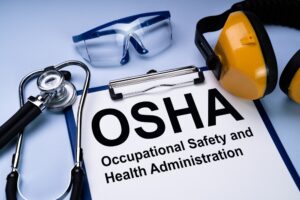The Occupational Safety and Health Administration (OSHA) continues to work on six economically significant rulemakings, including developing a workplace violence prevention rule, according to a March 14 Department of Labor (DOL) Federal Register notice (89 Fed. Reg. 18744).
An earlier DOL notice omitted a listing of the department’s regulatory flexibility items on its semiannual regulatory agenda (89 Fed. Reg. 9696, 02/09/2024).
OSHA’s economically significant rulemakings include two in the pre-rule stage and four in the proposed-rule stage. The two rulemakings in the pre-rule stage are for:
- Process safety management (PSM) and the prevention of major chemical accidents: Former President Barack Obama signed an Executive Order in 2013 directing OSHA and other federal agencies to improve chemical facility safety and security. OSHA so far has issued a request for information (RFI) conducted a Small Business Regulatory Enforcement Fairness Act (SBREFA) review, and held a stakeholder meeting last fall. The agency is now analyzing input from the stakeholder meeting and expects to complete its analysis this year. The White House Office of Information and Regulatory Affairs (OIRA) is reviewing a separate update to the PSM standard incorporating changes in the Globally Harmonized System of Classification and Labelling of Chemicals (GHS).
- Prevention of workplace violence in healthcare and social assistance: OSHA issued an RFI seeking input from employers, workers, and subject matter experts and conducted a SBREFA review, and it’s now analyzing the results of that review.
Economically significant rulemakings in the proposed-rule stage include the following:
- Infectious diseases: Much of the agency’s work on an infectious disease standard was started and completed during the Obama administration, including an RFI, a stakeholder meeting, and a SBREFA review. The agency anticipates issuing a notice of proposed rulemaking (NPRM) in June.
- Communication tower safety: While the number of workers in the communications tower industry is small, the fatality rate in the construction and maintenance sectors of the industry is very high and has greatly exceeded the fatality rate for the construction industry overall. OSHA lists a March 2024 date for an NPRM.
- Emergency response: OSHA issued a proposal on February 5 to adopt an emergency response standard to replace the agency’s nearly 44-year-old fire brigades standard. Emergency response has been covered by a patchwork of hazard-specific OSHA standards, and none was intended as a comprehensive emergency response standard. OSHA standards regarding emergency response haven’t kept pace with industry standards or directives and guidance from other federal agencies.
- Tree care: A patchwork of standards applies to hazards in tree care operations, prompting the industry to petition OSHA to issue a rulemaking specific to tree care. OSHA has held a stakeholder meeting and conducted a SBREFA review. The SBREFA review examined potential impacts on small entities of an industry-specific standard. OSHA hasn’t yet published an NPRM, and none appears on the OIRA’s regulatory review dashboard. In January, OSHA’s Region 2 office launched a regional emphasis program (REP) of outreach and enforcement for the tree and landscape services industries in New Jersey, New York, Puerto Rico, and the U.S. Virgin Islands.

